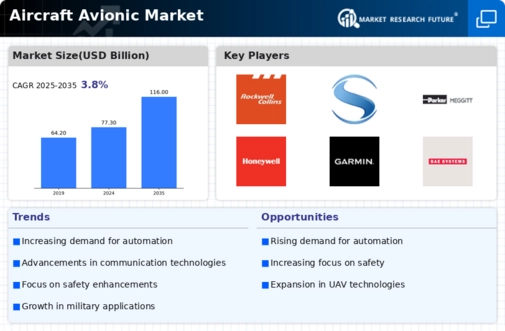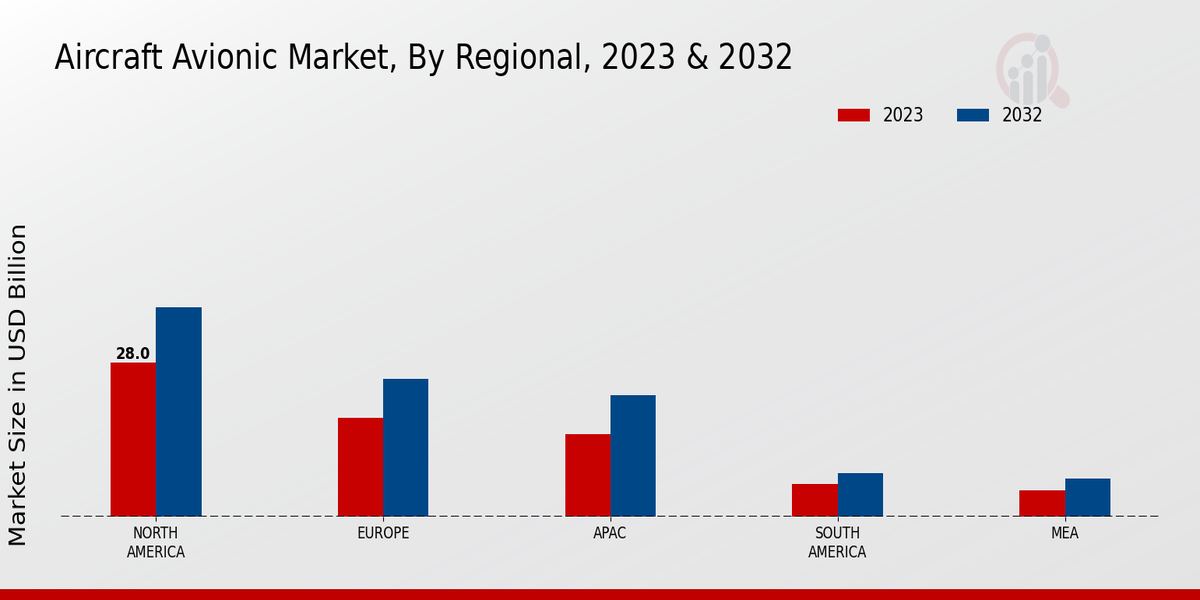Regulatory Compliance
Regulatory compliance plays a crucial role in shaping the Global Aircraft Avionic Market Industry. Governments worldwide impose stringent regulations to ensure aviation safety and environmental sustainability. For example, the Federal Aviation Administration (FAA) and the European Union Aviation Safety Agency (EASA) have established guidelines that mandate the use of advanced avionics systems in new aircraft. Compliance with these regulations not only enhances safety but also drives the adoption of innovative technologies. Consequently, the market is likely to witness increased investments in avionics systems to meet these regulatory requirements, further propelling growth in the coming years.
Emerging Markets Growth
Emerging markets are becoming increasingly influential in the Global Aircraft Avionic Market Industry. Countries in Asia-Pacific, Latin America, and the Middle East are witnessing rapid economic growth, leading to increased investments in aviation infrastructure. For example, India and China are expanding their aviation sectors, necessitating the adoption of advanced avionics systems to support their growing fleets. This trend is expected to drive the market's growth, as these regions seek to modernize their aircraft and improve operational efficiency. The influx of investments in aviation infrastructure in emerging markets is likely to contribute significantly to the overall expansion of the avionics market.
Market Growth Projections
The Global Aircraft Avionic Market Industry is projected to experience substantial growth in the coming years. The market is expected to reach 77.3 USD Billion in 2024 and is forecasted to grow to 116.0 USD Billion by 2035. This growth trajectory indicates a compound annual growth rate of 3.76% from 2025 to 2035. Such projections suggest a robust demand for avionics systems driven by technological advancements, regulatory compliance, and increasing air travel. The anticipated growth reflects the industry's resilience and adaptability in meeting the evolving needs of the aviation sector.
Technological Advancements
The Global Aircraft Avionic Market Industry is experiencing rapid technological advancements, particularly in avionics systems. Innovations such as fly-by-wire technology and advanced navigation systems enhance aircraft safety and efficiency. For instance, the integration of satellite-based navigation systems has improved accuracy and reliability in flight operations. As a result, the demand for modern avionics systems is expected to rise, contributing to the market's projected growth from 77.3 USD Billion in 2024 to 116.0 USD Billion by 2035. This trend indicates a compound annual growth rate of 3.76% from 2025 to 2035, reflecting the industry's commitment to adopting cutting-edge technologies.
Increased Air Travel Demand
The Global Aircraft Avionic Market Industry is significantly influenced by the rising demand for air travel. As global economies recover and expand, the number of air passengers is projected to increase, necessitating more efficient and reliable aircraft. This surge in demand compels airlines to invest in modern avionics systems that enhance operational efficiency and passenger safety. The International Air Transport Association (IATA) forecasts that global air passenger numbers will reach 8.2 billion by 2037. This anticipated growth in air travel is likely to drive the demand for advanced avionics, contributing to the market's expansion over the next decade.
Military Modernization Programs
Military modernization programs are a key driver of the Global Aircraft Avionic Market Industry. Nations worldwide are investing heavily in upgrading their military aircraft with state-of-the-art avionics systems to enhance operational capabilities. For instance, the United States and NATO countries are focusing on integrating advanced avionics into their fleets to improve situational awareness and combat effectiveness. This trend is expected to result in substantial investments in avionics technologies, thereby boosting market growth. As military budgets increase, the demand for sophisticated avionics systems is likely to rise, further contributing to the overall expansion of the industry.






















